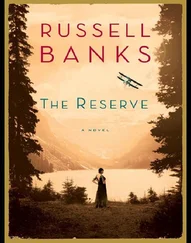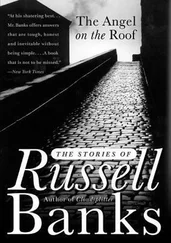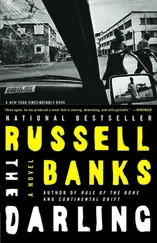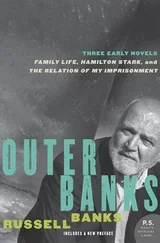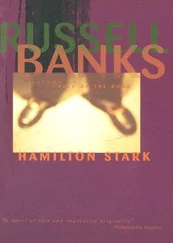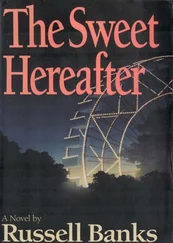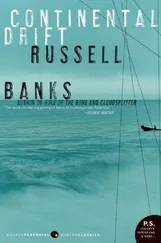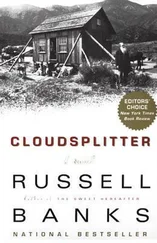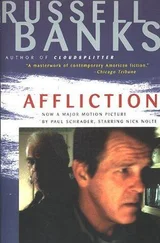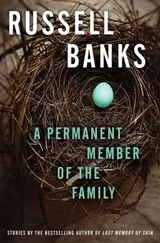Russell Banks - Lost Memory of Skin
Здесь есть возможность читать онлайн «Russell Banks - Lost Memory of Skin» весь текст электронной книги совершенно бесплатно (целиком полную версию без сокращений). В некоторых случаях можно слушать аудио, скачать через торрент в формате fb2 и присутствует краткое содержание. Год выпуска: 2011, Издательство: Ecco, Жанр: Современная проза, на английском языке. Описание произведения, (предисловие) а так же отзывы посетителей доступны на портале библиотеки ЛибКат.
- Название:Lost Memory of Skin
- Автор:
- Издательство:Ecco
- Жанр:
- Год:2011
- ISBN:нет данных
- Рейтинг книги:5 / 5. Голосов: 1
-
Избранное:Добавить в избранное
- Отзывы:
-
Ваша оценка:
- 100
- 1
- 2
- 3
- 4
- 5
Lost Memory of Skin: краткое содержание, описание и аннотация
Предлагаем к чтению аннотацию, описание, краткое содержание или предисловие (зависит от того, что написал сам автор книги «Lost Memory of Skin»). Если вы не нашли необходимую информацию о книге — напишите в комментариях, мы постараемся отыскать её.
and
returns with a provocative new novel that illuminates the shadowed edges of contemporary American culture with startling and unforgettable results.
Suspended in a strangely modern-day version of limbo, the young man at the center of Russell Banks’s uncompromising and morally complex new novel must create a life
Lost Memory of Skin — читать онлайн бесплатно полную книгу (весь текст) целиком
Ниже представлен текст книги, разбитый по страницам. Система сохранения места последней прочитанной страницы, позволяет с удобством читать онлайн бесплатно книгу «Lost Memory of Skin», без необходимости каждый раз заново искать на чём Вы остановились. Поставьте закладку, и сможете в любой момент перейти на страницу, на которой закончили чтение.
Интервал:
Закладка:
The Kid is imagining his city the way the pirates under Captain Kydd saw it when they first sailed into what’s now called Calusa Bay. He doesn’t know their story or the history of this place but with the map in his hand he can imagine it. They’d approach the mainland from the east-southeast sailing up from the Caribbean atop that deep green current called the Gulf Stream. They’d be on the run after pulling off a set of daring raids in the waters off the coast of Hispaniola, their ship loaded down with bars and coins of stolen gold. The Kid would’ve climbed to the crow’s nest atop the mainmast, sent up by the Captain to keep a sharp lookout: Keep your starboard eyeball on the glass for ships sailing north behind us, lad. And use your portside eye for the dear old harbor on the east coast of the mainland. That dear old harbor would be Calusa Bay though it’s not yet named and isn’t on any maps yet, not even the Captain’s.
Between the string of low-lying coastal islands and the mainland a meandering river that drains the mainland dissolves in a marshy delta and empties into a broad bay so that when you enter the bay your first sight of the mainland is of a long green line dividing the sea from the cloudless sky. It’s midday with a light breeze out of the east and where the bow slides through the low waves the water glitters like silver coins. After decades of pillage and flight Captain Kydd knows these waters better than any other man. He takes the wheel himself, orders the mainsails down, and brings his ship straight in toward shore as if he plans to run it aground on the offshore mangrove islets. It’s high tide and from above in the crow’s nest you can see the narrow cut between two of the islets, a channel deep enough at high tide and just wide enough to let the ship slip past the islets into the broad blue-green bay.
The waters on the seaward side of the mangrove isles are thick with schools of silver fish surging and turning in huge sweeping motions, wide rivers of fish just beneath the surface so closely crowded that you can drop a bucket into the sea and bring it back filled with flopping gasping fish. You can drag a weighted basket across the sandy bottom and a minute later pull it back to the ship and dump dozens of large spiny lobsters onto the deck. As the ship approaches, flocks of birds — anhingas, pelicans, cormorants, egrets, and herons — rise from the mangroves into the sky where they thicken into layers of birds and spread out until they block the sun and cover the sea and ship below in darkness as if evening has come on. Herds of sea cows, enormous lumbering manatees, part for the ship, making room for it to pass from the sea into the bay, then gather behind it into a massed crowd of animals, hundreds of them, gently watchful, trusting, and almost politely deferring to the ship.
All sails are furled now and the crew has been sent to man the lifeboats and tow the ship slowly across the bay toward the mainland. As the Kid rows, he looks back over his shoulder at the lush flowering trees, the jacaranda and lignum vitae and the flame-colored poincianas and the forests of thatch palms and palmettos and groves of slash pine spreading inland from the sandy shore. There are sea grapes and along the islets where the streams empty into the bay white, red, and black mangroves float on their stilts.
Captain Kydd stands in the bow of the lead lifeboat. The first mate sits in the stern manning the rudder while the Captain indicates with his one good arm where to aim the boat. There are eight men rowing, their backs bent to their destination, and though the Kid doesn’t want to be seen slacking off every now and then he turns in his seat and steals a look at where he’s headed. They’re moving north in the bay a few hundred yards off the mainland, slowly towing the ship toward what appears to be a large low-lying island at the far end of the bay. He spots a protective shelf of land with hills high enough to look out over the tops of the mangrove islets one way to see if danger is approaching by sea and over the tops of the pines and palms and lush flowering trees the other way to see if danger is approaching by land.
From the top of the highest hill which the Captain has named Spyeglass Hill you can survey the entire island. It’s shaped like a whale with a shark riding its back. The mouth of the whale is wide open and about to swallow the smaller island. The ship has been anchored in the shallow waters on the leeward side of the smaller island. When the tide turns and the waters empty from the cove turning it into a mudflat the ship’s hull will be exposed to the sun and air. One crew will go to work scraping it free of barnacles and sea worms. A second crew will cut trees and construct a small fort atop Spyeglass Hill and a palisade in case they are attacked either by the murderous Indians or by a contingent of European or American sailors. A third crew carefully selected by the Captain for their loyalty to him will carry from the ship his treasure — trunks and wooden cases filled with gold bars and coins, jewels and precious stones, a ton or more in all — sweating in the afternoon sun, lugging the booty from the ship across the mudflat into the jungle to a spot near the center of the island that only the Captain knows how to find, where there is a cave that he has used for years as a hiding place for his stolen cargo. The cave is like an enormous vault known only to a handful of men who have been sworn to secrecy in exchange for a promise to share out the treasure when the time comes for the Captain to give up piracy on the high seas and return to land and a life of respectable law-abiding luxury. The Captain holds five shares of the treasure and the five men he’s chosen to divide it with hold one share each.
Who are the five? The Kid believes he is one. X marks the spot and the Kid puts his finger on it and says to the Professor, Here’s where they buried their treasure.
Correct. But where is the island?
Right here, man. Right where we’re standing.
The Professor chuckles. He’s amused that the Kid seems to have taken seriously the map that the Professor drew from his memory of the map drawn by Robert Louis Stevenson to illustrate his novel Treasure Island . Amused and a little disappointed. He meant it as a joke and a tease. But is it funny if the Kid doesn’t get the joke and doesn’t realize he’s being teased?
No, seriously, dude. I bet we’re standing on Captain Kydd’s original island. What’s left of it.
How do you know?
I just know.
You could be right. But from the map it could be anywhere. I’ve seen a dozen islands that correspond to its approximate shape and contours. From Nova Scotia to the Caribbean to the South Seas. Captain Kydd anchored at hundreds of islands and harbors like this. The Professor squints and studies the map as if searching for something he may have missed in all the times he’s studied it. He says to the Kid, Of course, he probably passed by this bay, Calusa Bay or whatever it was called then, more often than any other. And no doubt there was an island already here when they dredged the Bay for the soil to build the Great Barriers and put up the Causeway to connect the Barriers to the mainland. So it’s certainly possible, my friend. Yes, Captain Kydd’s treasure may well lie beneath us.
More than possible, man. It’s fucking here. I can feel it.
How do you plan to locate it?
I don’t know. Maybe I could use one of those forked sticks people find underground water with. I have the vibe on this, Professor.
Dowse for it? Why not? But assuming you locate the spot where it’s buried, how do you propose getting it out from under this concrete island and the Causeway overhead? Dynamite?
Читать дальшеИнтервал:
Закладка:
Похожие книги на «Lost Memory of Skin»
Представляем Вашему вниманию похожие книги на «Lost Memory of Skin» списком для выбора. Мы отобрали схожую по названию и смыслу литературу в надежде предоставить читателям больше вариантов отыскать новые, интересные, ещё непрочитанные произведения.
Обсуждение, отзывы о книге «Lost Memory of Skin» и просто собственные мнения читателей. Оставьте ваши комментарии, напишите, что Вы думаете о произведении, его смысле или главных героях. Укажите что конкретно понравилось, а что нет, и почему Вы так считаете.

